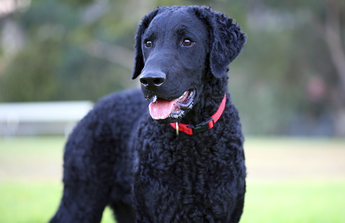The Irish Setter is a working gun dog that was developed in Ireland. The breed was probably developed by using a combination of spaniels, other setters, pointers and theIrish Terrier.
At first, Irish Setters were in the same family with theIrish Red and White Setter, but they were separated into an individual breed in the early 1800s. Over a period of time the breed was split between field and show dogs, but today an effort is being made to bring the field ability and the beauty of the Irish Setter together.
Over the years many breeders have started breeding more for looks rather than the dog’s hunting ability. The Irish Setter's talents include hunting, tracking, retrieving, pointing, watchdog, agility and competitive obedience.










